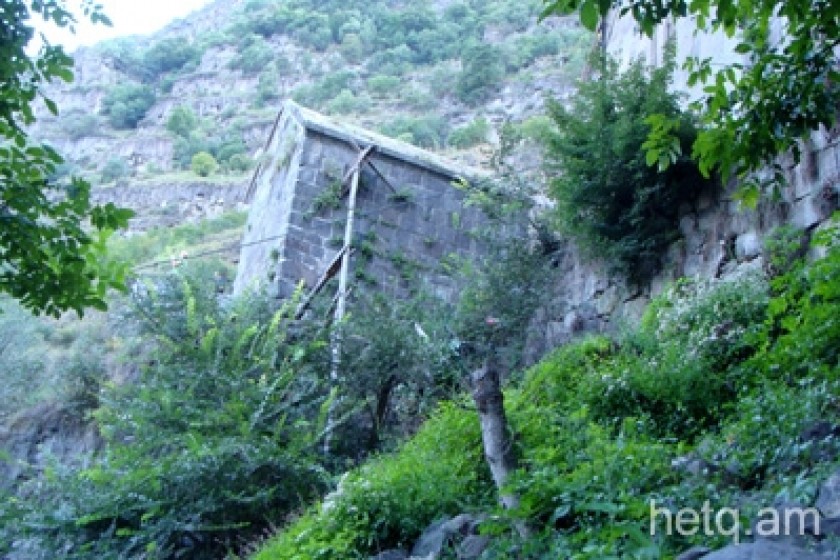
Kobayr Monastery: Nestled on the Cliffs Overlooking the Debed River
Rising along the terraced slopes of the Debed River near the village of Kobayr in Lori Marz is the 12th century Kobayr Monastery.
It’s nestled amongst the trees and mountain springs, literally built on the cliff walls. The complex lies just north of the town of Tumanyan.
Perched on a shelf of the gorge, in an ancient and sacred place where springs seep out of the rock, trees and vines twine among the intricately carved blocks of the monastery.
Kobayr, with its bell tower and three churches, has undergone restoration. Deputy Culture Minister Arev Samuelyan told Hetq that the work, at a cost of some 15 million AMD, was carried out in 2011 and this year on the bell tower section and burial structure alone.
Work on the bell tower and cemetery is due for completion by 2014.

The monastery was built on a shelf of a gorge by the Princess Mariam of the junior Bagratuni branch, the Kyurikids in 1171. (Armenian Kingdom formed during the breakup of Bagratuni Armenia).
The bell-tower/mausoleum in the middle of the complex was built in 1279 to house the tombs of Mkhargryel and his wife Vaneni. There is a little sacred spring flowing within.
By the middle of the 13th century, Kobayr had passed from the Kyurikids to Zakharids, turning from a monotheistic centre into a Chalcedonian one (confessed by Georgians). The monastery reverted to the Armenian Apostolic Church in the 15-16th centuries, as did all Chalecedonian monasteries, when Georgia was carved up into several statelets and Byzantium was overrun by the Turks.

Georgians claim Kobayr as their own. Restoration workers told architecture specialist Samvel Karapetyan that Georgia ambassador to Armenia had visited the site and made the same claim.
Karapetyan points to a work by ethnographer Yervand Lalayan (19-20th century) stating that Kobayr is a Georgian structure. He says the Georgians readily use this to back up their claims.

Toppled walls of the monastery.


Many of the stones are intricately carved with inscriptions.


Gravestones.

This open space, resembling a balcony, is actually a burial site.

Visitors to Kobayr, like many other historical monuments in Armenia, have defaced the walls.


A nearby cave in the cliff walls.




A panorama of the town of Tumanyan and the Debed River.

Samuel Karapetyan visited the site in 1981. A large section of the cliff had tumbled into the center of the main church. We can’t say for certain when this occurred.
 |
| Photo by Samvel Karapetyan |
Work to preserve the crumbling monastery began in the 1950s and recommenced in 2005.

Karapetyan says the current restoration work is of good quality. Most of the restorers hail from the nearby town of Tumanyan.

Overall, Deputy Minister Samuelyan says the Armenian government has spent 130 million AMD to stabilize the structure, preserve the interior frescoes, repair the road to the site, etc.

On the narrow path leading down to the village of Kobayr and the little train station.


According to the 2001 census, the village had 45 residents.
 Videos
Videos Photos
Photos
Comments (2)
Write a comment